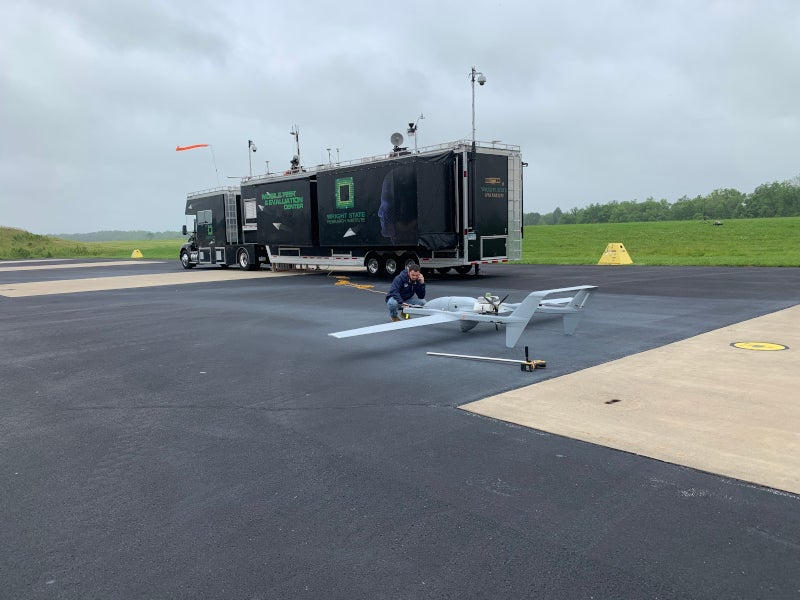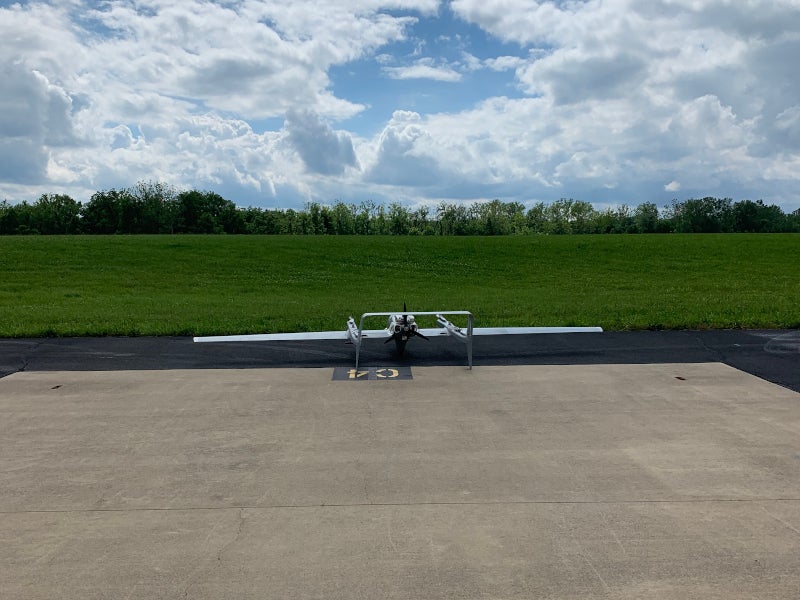FVR-90 is a vertical take-off and landing (VTOL) unmanned aerial system (UAS) designed and developed by L3Harris Technologies.
The long-endurance UAS is equipped with a patented Hybrid Quadrotor (HQ) technology offering innovative solution to ensure efficient operations than conventional VTOL platforms. It combines the VTOL functionality of a quadrotor with the efficiency, speed and range of a fixed-wing aircraft.
FVR-90 is a highly capable Group 3 UAS with the footprint of a Group 2 system. It requires no launchers and is capable of performing joint forcible entry (JFE) operations. The unmanned system offers VTOL capability in confined spaces on land and at sea.
In June 2019, L3Harris completed a demonstration with the Air Force Research Laboratory at Camp Atterbury, Indiana, US. The demonstration involved the integration of FVR-90 platform with the AFRL Vigilant Spirit Control Station (VSCS) and its UxAS module.
FVR-90 UAS design and features
The FVR-90 UAS has a length of 2.48, a width of 4.8m, and a maximum gross take-off weight of 53kg (117lb). It can be operated by a pilot and a maintainer.
The UAS is an innovative modular solution delivering runway independence and unprecedented endurance. It can perform missions in austere, maritime and confined
environments.
The FVR-90 UAS is integrated with hybrid quadrotor technology for long-endurance VTOL capability. The unmanned aircraft eliminates launch and recovery equipment and can be easily transported as it features few components.
It features a modular nose and two hard points, enabling simple end-user integration of payloads according to the requirements. The UAS offers lower initial system costs and reduced operational costs.
Payload of FVR-90 VTOL UAS
The unmanned aircraft system has the capacity to carry a maximum payload of 10kg (22lb). It can also support payload modularity through a front bulkhead universal interface for accommodating various customer-specific payloads. The main payload requires a payload power of 200W and a voltage of 28VDC. Mechanical provision for a dedicated payload GPS antenna is also available.
The UAV can be installed with a WESCAM MX-8 stabilised multi-sensor, multi-spectral imaging system. The electro-optical (EO) and infrared (IR) system is based on a four-axis gimbal with a six-axis internal passive isolator. It integrates a mid-wave infrared (MWIR) camera with a 2.75° to 28.4° field of view (FOV) and a complementary metal oxide semiconductor (CMOS) sensor with a 1.53° to 30.0° FOV.
It also features a Class 1 laser rangefinder and a Class 3b laser illuminator with a wavelength of 852nm. The aircraft has a 4-axis gimbal with 6-axis internal passive isolator.
Navigation and control
The aircraft uses primary and secondary data links. The primary data link has a latency of less than 500ms. The transfer rate of the data link is 40Mbps at 60km and 1Mbps at 100km. The UAS can autonomously loiter, land and return to base, in the event of loss of link. The acoustic detection range of the UAS is 3km and no critical data is stored aboard the aircraft.
The unmanned system can be installed with optional communication systems including M-code receiver for GPS-denied operation and Iridium satellite communications.
The UAS is controlled by a small mobile ground control station equipped with a windows tablet or laptop.
FVR-90 UAS performance
The time required to deploy the UAS is approximately one hour and it requires 30 minutes for pre-flight and post-flight procedures. The maximum loiter speed of the UAV is 65k.
The unmanned aircraft has a maximum endurance of 15 hours based on the installed payload. It can reach a maximum operational altitude of 5,000ft.






